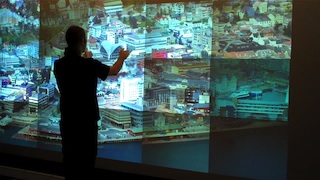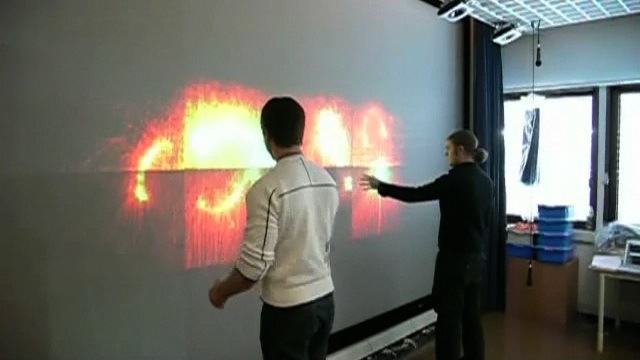Navigating a 13.3 Gigapixel Image on a 22 Megapixel Display Wall
This video demonstrates how we can use the display wall to navigate an extremely high-resolution image with very good performance. This was a project done in collaboration with photographer Eirik Helland Urke, who took the photo used in the video. You can read more about the project here: http://www.cs.uit.no/~daniels/gigapix/
This video was widely covered by the media. Read more at Engadget, Singularity Hub, HackADay, SlashGear and Switched, or the Norwegian coverage by NRK Beta, and iTromsø.
The 22 Megapixel Laptop
This video demonstrates the 22 megapixel laptop, where a single laptop is used to drive all the 28 displays making up our display wall. You can read more about the 22 megapixel laptop here: http://www.cs.uit.no/~daniels/22-megapixel-laptop/
This video received wide-spread media coverage, from sites like Gizmodo, SlashGear and CrunchGear.
Three years of the comic "M" on a display wall
This video demonstrates the device- and touch-free interaction system for our display wall, used to navigate a large collection of the Norwegian comic "M". Hand gestures are used to pan and zoome the collection. When the user snaps his fingers/claps his hands, the collection is zoomed in or out at the location of the snap.
Device-free Interaction Spaces
This video demonstrates the device-free interaction system being used to create three-dimensional interaction spaces in front of a display wall. The system tracks depth by tracking an object's 2D position in a set of slices that fan out towards the user in fron of the display wall. This video accompanies a paper published at IEEE 3DUI 2009.
Hybrid Vision- and Sound-based Interaction
This video demonstrates vision- and sound-based components of the touch- and device-free interaction system we have built for the display wall. It also shows off some applications we have created and some that we modified (like Quake 3 Arena) to run on the display wall with these input systems. The video accompanies a paper presented at the IEEE workshop on Human-Computer Interaction, held in conjunction with IEEE ICCV 2007.










